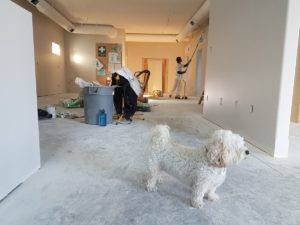Do-It-Yourself (DIY) projects have been on the rise in recent years, and one of the most popular DIY jobs is cabinet installation. While it may seem straightforward, there are many things to consider when undertaking this project.
From selecting the suitable materials for your cabinets to ensuring that they’re correctly installed and secured, there’s much more than meets the eye when it comes to DIYing cabinets. This article will explore some of these considerations so you can make sure your cabinet installation project is successful.
Measure twice, cut once
When considering DIYing cabinets for your home, keeping the adage “measure twice, cut once” in mind is essential. Doing so will ensure that you’re making precise measurements and cutting accurate pieces to fit them together perfectly. This will help minimize the time spent making adjustments due to incorrect cuts.
Also, by taking more time to measure correctly, you can drastically improve the quality of the cabinet work; you’ll have a much sturdier construction than if you’d chosen to cut everything hastily at once.
This ensures that you don’t end up wasting materials on mistakes that could have been easily avoided by double-checking ahead of time and having a far superior quality product.
Additionally, measuring twice and cutting once saves a considerable amount of money by avoiding buying repeated supplies wasted on mistakes from incorrect measurements. Always remember: when DIYing cabinets, measure twice and cut once for best results!
Choose suitable materials for your project
It is essential to make sure you choose suitable materials for your project. Not only does it ensure you get a quality product, but it can also save you money in the long run. With the wrong choice of materials, you may end up with a product that will not last very long and serious problems during installation or when using the cabinet.
Wooden cabinets require high-quality wood, preferably hardwood, while you must craft metal from rust-resistant alloys like stainless steel. It would help if you also considered installing door pulls that have backplates to ensure that the cabinet won’t be damaged when opened and closed.
Investing in proper building materials upfront will help extend the useful life of your DIY cabinet and avoid costly repairs down the road. With an understanding of these critical factors, on top of being able to plan out your entire project ahead of time, you’ll end up with a one-of-a-kind piece that looks perfect in any space.
Understand which tools you need

Doing your cabinet construction is a great way to save money and get a custom look in your home, but you need to ensure that you use the right tools for the job. In addition to having the necessary safety precautions like safety glasses, gloves, and protective clothing, you must understand which tools best match the task.
For example, a circular saw is suitable for cutting straight lines, while a jigsaw can provide more intricate shapes with curves or even help cut circles into your cabinets. Understanding how each tool works and operating it safely will ensure that you create high-quality cabinets with professional results. This can then help improve the value of your house with an excellent finish that both looks good and is secure.
Allow for adequate ventilation
Installing your cabinets is a great way to update your home, save money and take pride in craftsmanship. However, allowing sufficient ventilation when installing these cabinets not only ensures that they won’t be damaged due to moisture buildup but can also add longevity and increase the overall quality of the cabinets.
Leaving an air gap between cabinet parts is vital for a structure that will last and prevent potential problems. Wood can swell or warp depending on climate and moisture levels, resulting in squeaky or unaligned doors if ventilation isn’t considered when installing.
With proper ventilation, you can expect lasting beauty in the space and long-term performance. Taking adequate steps to ensure good air circulation when you install your cabinets will be worth it in the end!
Select the correct type of screws or nails
Installing cabinets you crafted on your own is a great way to customize the look and feel of a space. To ensure that the job is done correctly, it’s essential to select the right screws or nails for the installation process.
Using proper fasteners helps secure the cabinets firmly in place while withstanding daily wear and tear – increasing their longevity over time. Furthermore, by improving durability and providing structural support, selecting appropriately-sized screws or nails plays an essential role in maintaining the quality of your cabinets.
Ultimately, getting your fasteners accurate can go a long way toward making sure your DIY cabinet project has a professional finish and stands up against everyday use.
These are some of the essential considerations when DIYing cabinets. Along with proper planning and preparation, taking these factors into account will help ensure that your project is successful and results in a beautiful, custom-made product that you can be proud of. So get ready to measure twice and cut once – DIYing cabinets can be a gratifying experience if done right!













